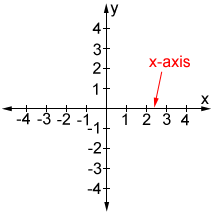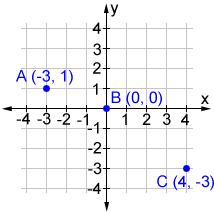X axis
The x-axis is one of the two number lines that make up a 2D rectangular coordinate system (or one of three in a 3D coordinate system).
What is the x-axis
In a 2D coordinate system, the x-axis definition is the horizontal number line used to measure horizontal distance from the y-axis. The corresponding vertical axis is the y-axis. In the 2D coordinate system, the x and y-axes are oriented in this manner by convention. In a 3D coordinate plane however, since there are 3 axes, the x- and y-axes may be oriented differently. The figure below shows an x-axis example in a 2D coordinate system.

Ordered pairs
The x-axis is used along with the y-axis to determine ordered pairs, which describe the position of points in the coordinate plane. Both axes are number lines. Since the x-axis runs horizontally, it is used to describe the horizontal position of a point. Similarly, the y-axis is used to describe the vertical position of a point. The position of a point is written as an ordered pair, which takes the form (x, y). The first number in the pair corresponds to the horizontal position of a point and is called the x-coordinate. This number indicates the horizontal distance and direction (by convention: negative = left, positive = right) relative to the y-axis. The figure below shows three ordered pair examples:

Points A, B, and C are graphed on the coordinate plane above. The x-coordinate of point A is -3 which indicates that it is 3 units left of the y-axis; the x-coordinate of B is 0, so it is located on the y-axis; the x-coordinate of C is 4, so it is 4 units right of the y-axis.
